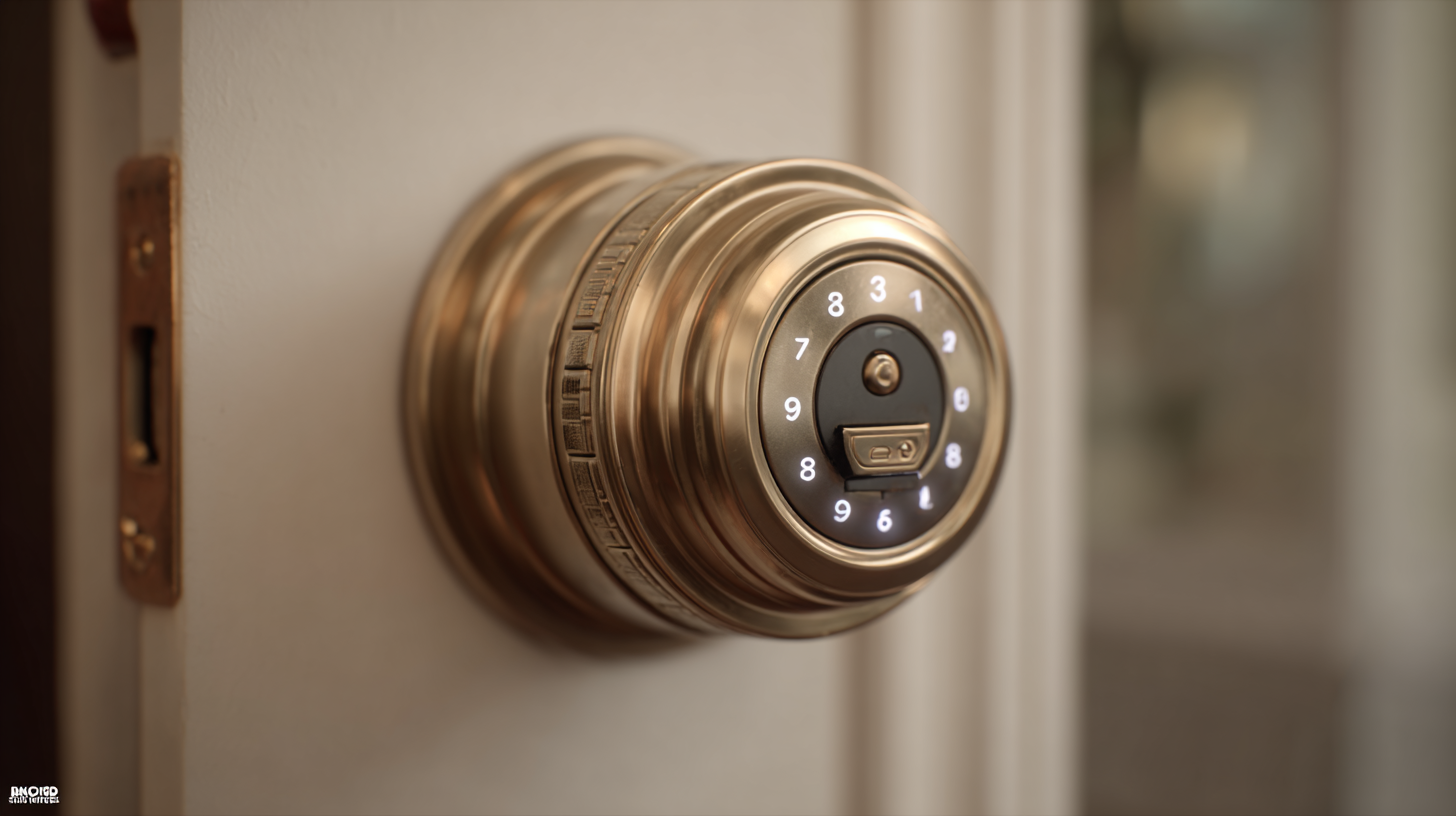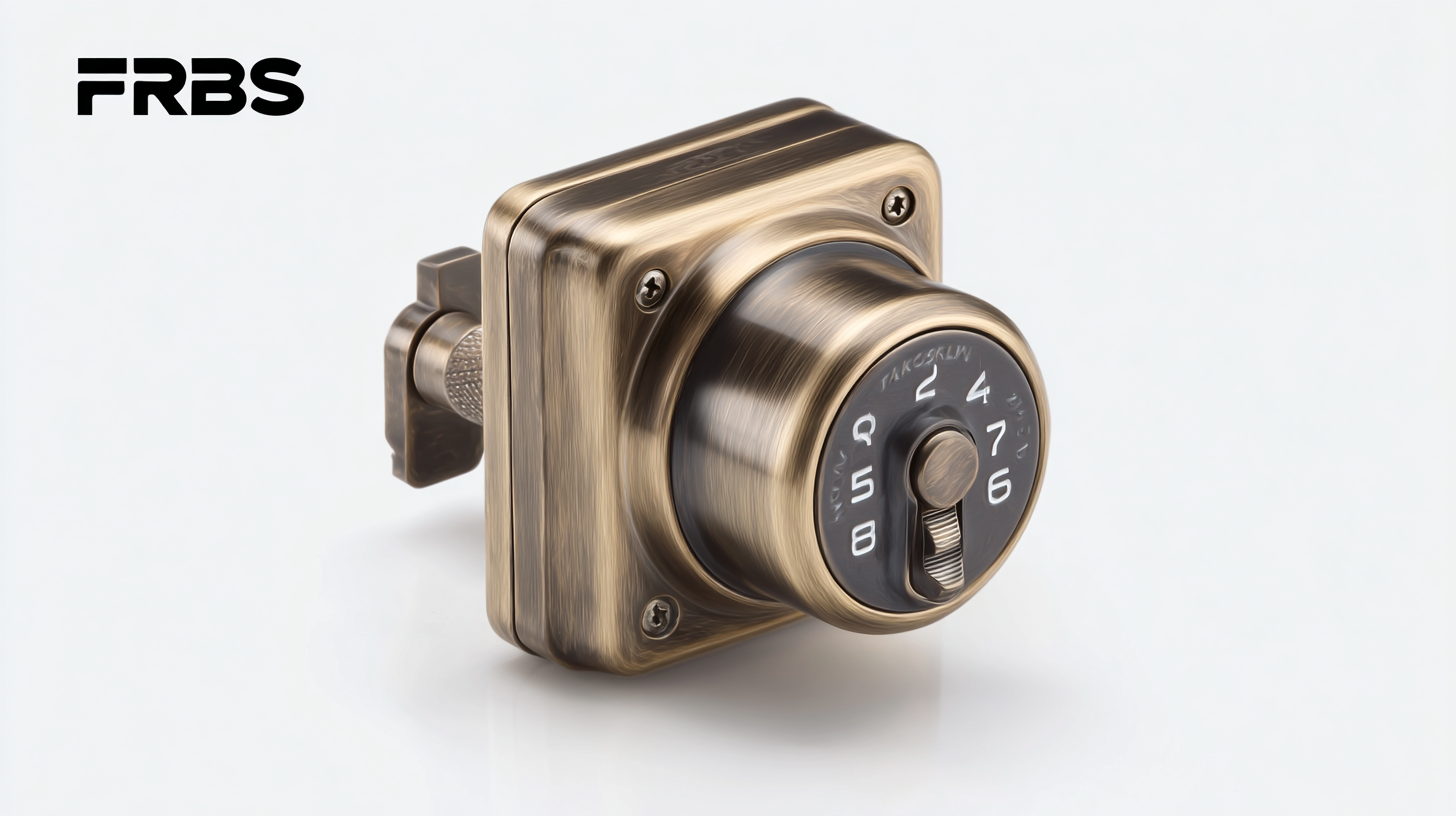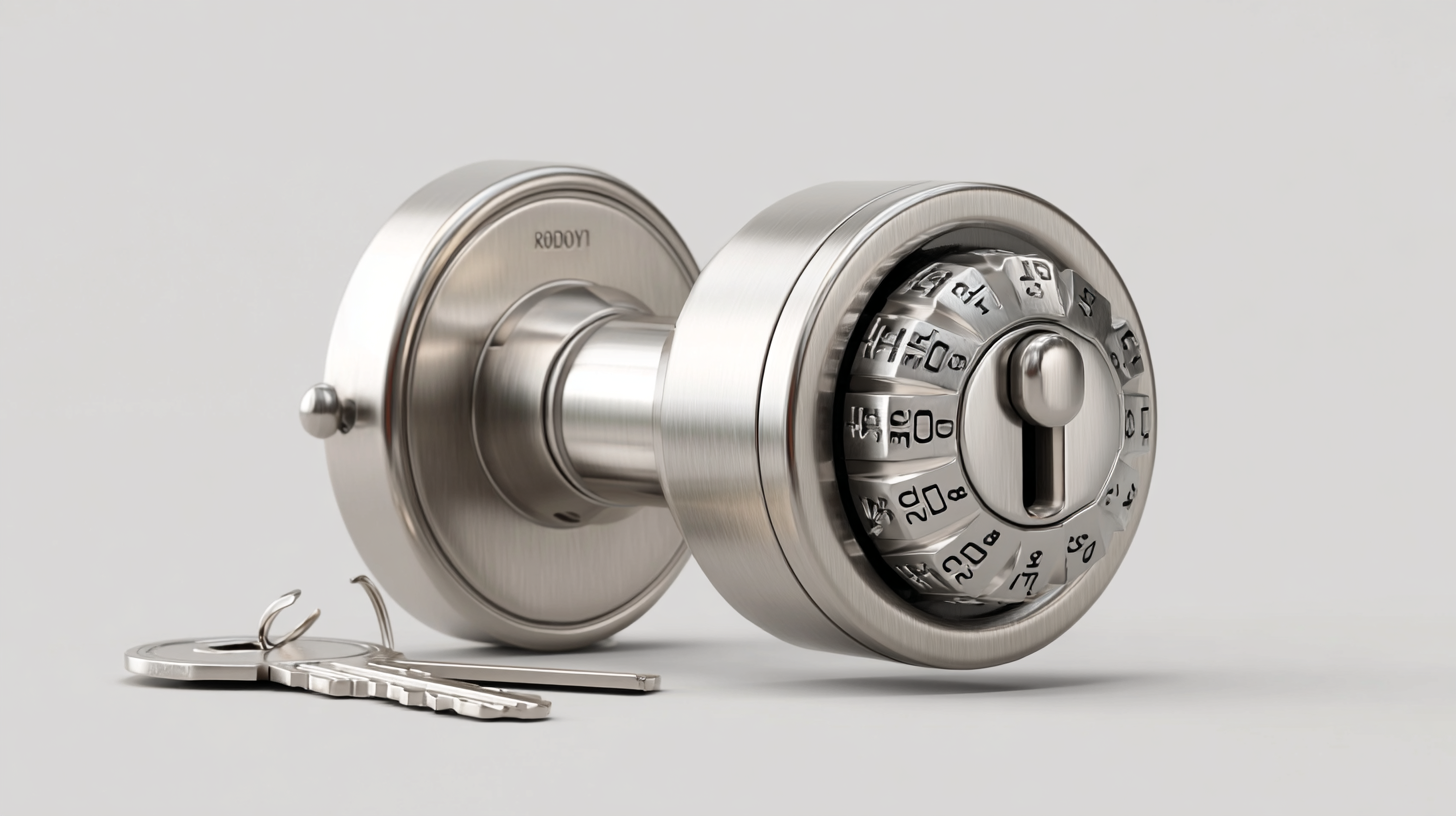
Future Trends Shaping the Best Deadbolt Locks Market in 2025 with Data Insights
As we look toward 2025, the deadbolt locks market is poised for significant transformation, driven by advancements in technology and evolving consumer preferences. According to a recent report by MarketsandMarkets, the global smart lock market, which includes deadbolt locks, is expected to reach USD 4.5 billion by 2025, growing at a CAGR of over 25%. This dramatic growth highlights the increasing demand for security solutions that combine convenience and reliability. Different types of deadbolt locks, ranging from single-cylinder to smart deadbolts, each bring unique features and applications that cater to diverse consumer needs. The push for enhanced home security systems, fueled by rising urbanization and the growing importance placed on personal safety, emphasizes the integral role that deadbolt locks will play in future residential security strategies. Understanding these trends and the range of products available will be critical for consumers looking to safeguard their homes effectively.

Key Features to Look for in Advanced Deadbolt Locks in 2025
As we move closer to 2025, the landscape of deadbolt locks is undergoing significant transformation, driven by technological advancements and evolving consumer demands. When shopping for advanced deadbolt locks, one of the key features to consider is smart technology integration. Many of the latest models now come equipped with Wi-Fi or Bluetooth connectivity, allowing users to control their locks remotely via smartphone apps. This added convenience means you can lock or unlock your door from anywhere, receive alerts when someone enters, and even grant access to guests without being physically present.
Another crucial feature to consider is the level of security provided by the deadbolt lock. In 2025, locks with enhanced encryption methods and biometric access—such as fingerprint recognition—are expected to be at the forefront of the market. These innovations not only provide higher protection against unauthorized entry but also cater to the increasing consumer emphasis on personalized security solutions. Additionally, durability and resistance to physical attacks must not be overlooked, as advanced materials and robust designs redefine what security means for residential and commercial environments alike.

Emerging Technologies Influencing the Deadbolt Lock Market
The deadbolt lock market is undergoing significant transformation as emerging technologies pave the way for smarter and more secure locking solutions. Innovations such as smart locks and IoT-enabled devices are redefining traditional security measures, allowing homeowners greater control and convenience through mobile applications. These technologies not only enhance security but also provide users with remote access, alerts, and monitoring capabilities, effectively bridging the gap between physical security and digital engagement.

Furthermore, advancements in materials science are leading to the development of more robust and resilient deadbolt locks. Manufacturers are exploring new composites and finishes that not only improve durability but also resist tampering and environmental wear. As security concerns continue to escalate, these innovations will play a crucial role in meeting consumer demand for advanced protection. The convergence of security technology with smart home integration promises a future where deadbolt locks are not just physical barriers, but integral components of an interconnected safety ecosystem.
Consumer Preferences and Trends Driving Deadbolt Lock Innovation
As we look ahead to 2025, consumer preferences are increasingly influencing the innovation landscape of deadbolt locks. According to a recent report by MarketsandMarkets, the global smart lock market is projected to reach $3.8 billion by 2025, growing at a CAGR of 24.5%. This rapid growth is largely driven by a shift in consumer desire for enhanced security features, convenience, and automation. Modern consumers are now favoring deadbolt locks that integrate seamlessly with smart home systems, allowing them to manage access remotely through their smartphones.
Additionally, sustainable materials are gaining traction among environmentally conscious consumers. A study from ResearchAndMarkets indicates that around 40% of consumers are willing to invest more in products made from eco-friendly materials. As a result, manufacturers are exploring innovative materials and production techniques that reduce environmental impact while maintaining durability and security standards. This trend not only caters to consumer preferences but also positions brands as responsible players in a competitive market. The convergence of technology and sustainability is set to redefine the deadbolt lock market, paving the way for breakthroughs that align with the values of today’s consumers.
Future Trends Shaping the Best Deadbolt Locks Market in 2025 with Data Insights
| Feature | Consumer Preference (%) | Trends Driving Innovation | Expected Market Growth (%) |
|---|---|---|---|
| Keyless Entry | 45% | Smart Home Integration | 15% |
| Biometric Access | 30% | Enhanced Security Features | 20% |
| Remote Locking | 25% | Convenience and Control | 18% |
| Durability | 55% | Sustainability Trends | 12% |
| Aesthetic Design | 40% | Customization Options | 10% |
Security Standards and Regulations Shaping Future Deadbolt Designs
As we gaze into the future of the deadbolt locks market, it is clear that evolving security standards and regulations will significantly influence design and functionality. According to a recent report by the Global Security Institute, tightening regulations around residential and commercial security are pushing manufacturers to innovate. By 2025, deadbolt locks are expected to incorporate advanced materials and technologies, like smart sensors and biometric access, to comply with new safety standards that prioritize user safety and data protection.
Compliance with standards such as ANSI/BHMA Grade 1 and UL 437 not only demonstrates a manufacturer’s commitment to quality but also fulfills customer expectations for security. The rise in smart home technology has prompted the need for locks that not only meet mechanical strength criteria but also incorporate cybersecurity measures to prevent unauthorized access. The Smart Lock Market Report 2023 highlights that 47% of consumers now prioritize security features over traditional locking mechanisms, indicating a shift in consumer preferences that manufacturers must respond to. Consequently, innovation in deadbolt design will be heavily influenced by ongoing developments in safety protocols and technological advancements, shaping a more secure future.
Market Predictions: Top Brands and Players in Deadbolt Locks by 2025
As we approach 2025, the deadbolt locks market is anticipated to undergo significant transformations, particularly with the rise of smart locks. These innovative locking systems offer keyless entry and remote control through smartphones, positioning them as a leading choice for modern security solutions. With advancements in technology, the demand for smart locks is set to soar, driven by consumer desire for enhanced convenience and safety.
The competitive landscape in the deadbolt locks market is expected to be dominated by key players who have established strong brand reputations and extensive distribution networks. By 2025, it is projected that smart locks will account for a substantial share of the market, reflecting a shift in consumer preference towards intelligent security solutions. As manufacturers continue to innovate and improve their offerings, we can anticipate an exciting evolution in the deadbolt locks category, with technological developments playing a crucial role in shaping the future of home security.
